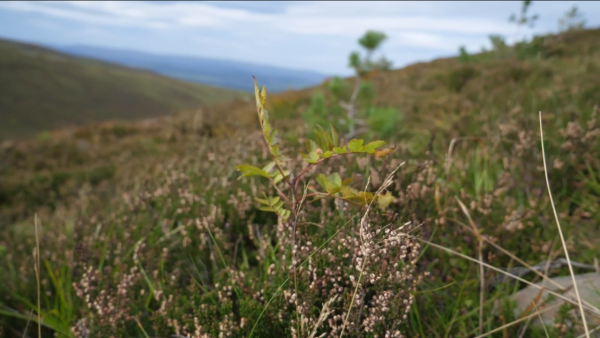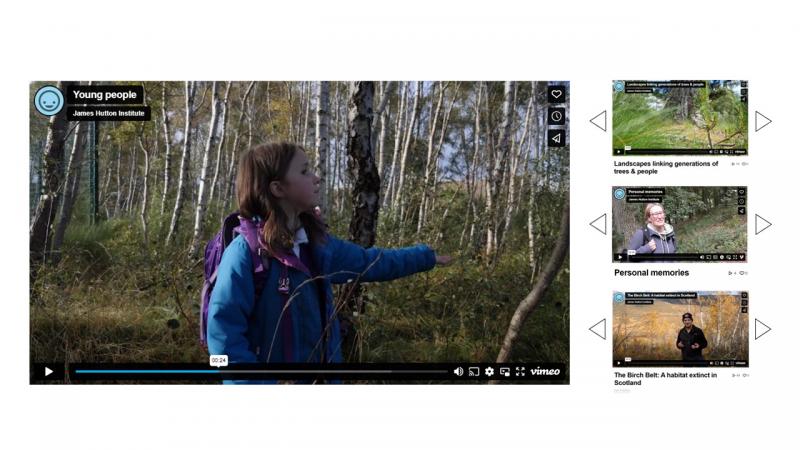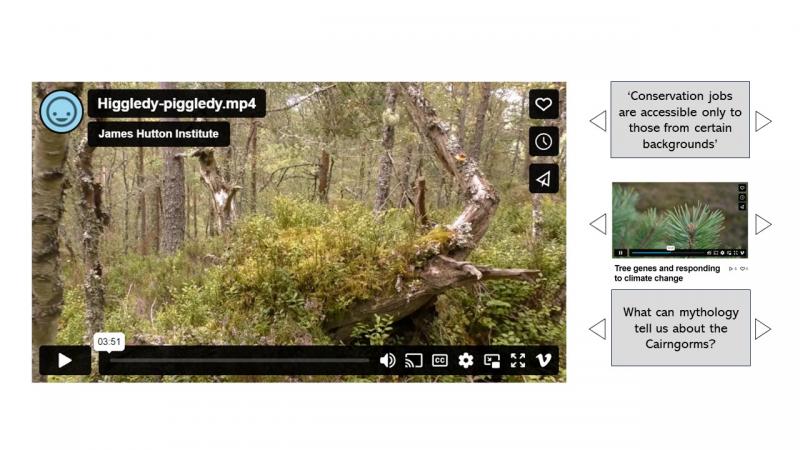Telling and listening to stories from the margins: the (re)storying of restoration in the Cairngorms
Uploaded on behalf of Alba Juarez Bourke
Stories are central in how humans make sense of the world, and in how we relate to each other and to nature. How we tell stories – through images and words – matters for biodiversity and ecological restoration, including whether, where and how it takes place, and who is involved and impacted. Great storytelling is vital.But what about listening to stories? Do we pay as much attention to story-listening as story-telling? Typically not.
Our project, RestorYation Cairngorms, has the goal of increasing the visibility of stories and aspects of Cairngorms ecologies, people and ways of knowing that have typically been marginalised.
It involves developing a digital platform which allows both an exploration of video stories and maps related to biodiversity in the area and, crucially, the flagging of perspectives still absent and needing to be addressed.
Central to our project is to enable awareness of and listening to a wider range of stories; to invite reflection and conversation around diverse stories, how they can converge and diverge in the platform, allowing insights and links to be made; and finally, to allow more engagement with the geographies of stories of restoration in the Cairngorms.

Montane woodland/scrub zone, Gaelic, and gender
Why is all this important? There is growing evidence of not just the value, but also the necessity of understanding a fuller diversity of narratives around biodiversity and restoration. It makes a difference. When diverse narratives are not heard, not understood or marginalized, conservation progress stalls – and on many fronts. Not listening has an impact. We have identified forms of marginalisation that are interlinked and result in these missing narratives:
- Marginalisation of ecologies, such as particular species or habitats. We will initially focus on the actual and potential treeline areas of the Cairngorms – known ecologically as the montane woodland and scrub zone located between forest and open ground at higher altitudes where trees cannot grow. For example, how have these places been engaged with – or not – now and in the past? By who? What meanings have been associated to them? This habitat has been described as Scotland’s ‘lost habitat’ as it is currently largely absent in the uplands of Scotland, with the trees and cohabiting species tending to survive only on cliffs or other places inaccessible to grazing animals.
- Marginalisation of particular ways of knowing, such as sensory, artistic and emotional as well as scientific knowledge. We will initially focus on Gaelic (and where appropriate Scots) as official minority languages of Scotland. For example, what can we learn from Gaelic language, culture and history about this area and stories of past/present/future ways of relating to land, biodiversity and their care?
- Marginalisation of people and social or cultural groups. We will initially focus on gender. For example, exploring how various dimensions of gender can matter to the past/present/future stories of the area.
These three axes of marginalisation overlap and are interrelated. For example, are there ways in which the marginalisation of Gaelic ways of knowing and relating to land, its use and management intersect with the marginalisation of specific people or ecologies?
We have already been collecting stories. Those we have so far are mainly videos, which we have either collected or filmed as part of the project (and a precursor “Understories” project), or they are existing videos produced outside of our project, but which we can link to.
Crucially, we will also include “placeholders” that mark the absence of stories and invite suggestions for addressing the gap.
We will also work creatively to explore how nonhuman dimensions can be better included. For example, how we can use video technologies and techniques to story with plants, fungi and other ecological entities in ways that may be typically overlooked.
RestorYation Cairngorms: a digital interactive platform
Alongside our collecting, we are designing and testing an online platform where the collected audiovisual stories will be gathered, focussing in the first instance around the three marginalised themes outlined above. The platform is still under development (and not yet on-line), but will have elements that look something like this:

The platform will also invite people to contribute further stories. This can be in the form of videos, but also as images, audio-recordings, written text or any other creative form of expression that can be hosted online. They might also flag up relevant historical or archival material.
Once a story has been viewed, the website will suggest other stories that have some aspect in common, in terms of the people, ecologies or type of knowledge featured, as well as stories with elements of difference.
For example, after watching a video about a young girl talking about her view on trees in the Cairngorms, drawing on her scientific knowledge, we’ll then be presented with suggestions of other stories featuring young people, trees and woodlands and scientific knowledge.
In this way users will be creating their own storyline, by selecting stories that they’re either already familiar with or particularly interested in, but also enabling people to encounter stories that they haven’t heard before or that are different to their own. We’ll invite people to respond to these stories, which would build on these or present contrasting ideas.
The platform will also include “placeholders” for stories that are still missing. For example, we might be presented with prompts such as: “Conservation jobs are accessible only to those from certain backgrounds” or “What can mythology tell us about the Cairngorms?”.
These are meant to give space to those narratives that we have still not been able to include as full stories in the platform and to prevent them being further marginalised through not being represented.
Our hope is that these will inspire people to respond to them with their own stories.

These ‘placeholders’ have emerged from our scoping review, which included a literature review and interviews. Click here if you’d like to read the full report on this.
What’s next for RestorYation Cairngorms?
Over the next couple of years we’ll be collecting stories to include in the platform. We’ll initially focus on the topics of
- The montane treeline
- Gaelic language
- Gender
If you have feedback and/or a story you’d like to contribute, or feel should be covered, please get in touch! We’d also love to hear your feedback about stories that you think are under-represented or missing in biodiversity research and management, and stories that you think should be included in the platform.
Our emails are Katrina.brown@hutton.ac.uk, alba.juarezbourke@hutton.ac.uk and restoryation@hutton.ac.uk.
We’ll also explore how the platform can be used to put lesser-heard stories at the centre of conversations around biodiversity management and research. We think it could be a useful tool for decision-making, deliberation, or even conflict resolution. Once the platform is online we’ll carry out a series of workshops to explore these ideas.
Researchers involved in this project are Katrina Brown, Alba Juarez-Bourke, David Donnelly, and Konstantinos Sideris. This project is funded by the Scottish Government RESAS Strategic Research Programme (SRP) 2022 – 2027, and is part of D4.1 (People and Nature). The project is informed by the project ‘Understories’ in the previous SRP 2016-2021.
To keep up to date with the project, see our website Enabling inclusivity in biodiversity narratives | The James Hutton Institute.
Disclaimer: The views expressed in this blog post are the views of the author(s), and not an official position of the institute or funder.
